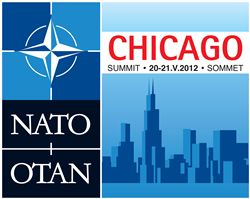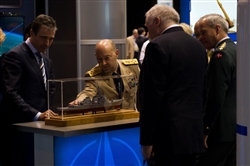Blog Posts tagged with "Anders Fogh Rasmussen"
Commitment to 2014 and Beyond
As the North Atlantic Council finished up the 25th Summit it is clearly evident that it was a summit of commitment. The Alliance made the commitment to complete transition in Afghanistan and to support Afghans in achieving a stable future. It also made the commitment to ensuring NATO is capable of dealing with 21st century challenges, as well as the commitment to further strengthen connections with our global partners. Most importantly, the Chicago Summit demonstrated our commitment to each other - the unbreakable bond between North America and Europe, which remains the bedrock of our security.
The Summit was a wonderful moment for the Alliance, held in America for the first time in more than 10 years and a nice opportunity for the United States to see NATO on its own soil. It included the heads of state and government of 28 NATO countries and many of the 22 additional partner countries who are with us in Afghanistan today; I think that’s significant when we look at a total of 50 troop contributing nations in Afghanistan, the item at the top of the agenda.
Afghanistan
The North Atlantic Council set the course for our future engagement in Afghanistan as we proceed on track to complete our ISAF mission by the end of 2014, and we will remain committed to our long-term partnership with the Afghan people. I'm pleased to report that we are making, I think, very strong progress and I remain cautiously optimistic about how things are going in Afghanistan.
Ten years ago we had ten coalition soldiers to every Afghan soldier in the field; today we have two, and in many places three, Afghans for every coalition soldier. So that transition is going extremely well. We see the Afghans taking the lead in almost 50 percent of the operations conducted, and we are partnered with them practically every operation, nearly 90 percent. So in the South and Southwest we see strong gains throughout the region, and that’s particularly noteworthy because they are the heartland of the insurgency.
Find more blog posts tagged with:
- Smart Defense
- From the Bridge
- President Hamid Karzai
- partnership
- summit
- Admiral James Stavridis
- President Barack Obama
- allies
- Afghanistan
- ballistic missile defense
- NATO
- Secretary General
- Coalition
- Anders Fogh Rasmussen
Continued Focus in Afghanistan
It’s been a busy couple of weeks since my last blog, including trips all over the NATO world. As regular followers of both US and NATO security interests, I’m sure you already know what a busy couple of weeks it has been.
Find more blog posts tagged with:
Afghanistan Visit and Way Forward
I came away encouraged and optimistic about our approach.



Comments: 0